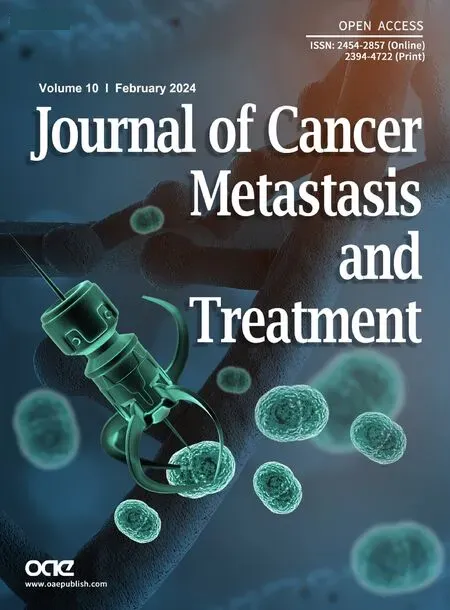Editorial on “Chinese expert consensus on the clinical practice of non-small cell lung cancer fusion gene detection based on RNA-based NGS” (2023 edition)
Qinghua Zhou
Lung Cancer Institute/Lung Cancer Center, West China Hospital, Sichuan University, Chengdu 610041, Sichuan, China.
The use of RNA-based next-generation sequencing (NGS) in the diagnosis and treatment of non-small cell lung cancer (NSCLC) has become an essential tool in precision medicine.This technology has revolutionized the way we approach cancer genomics, allowing for the detection of fusion genes that play a critical role in NSCLC.RNA-based NGS has been recognized by clinical practice guidelines and expert consensus as a reliable method for fusion gene detection, providing valuable insights into the underlying biology of NSCLC and guiding targeted therapies[1,2].
RNA-based NGS offers several advantages over traditional methods of gene fusion detection.It allows for the detection of novel fusion genes that may be missed by other techniques.Additionally, RNA-based NGS provides a more comprehensive view of the genetic landscape by interrogating the expressed genes in the tumor, which may not always be captured by DNA-based methods.This approach can help identify actionable targets and guide personalized treatment strategies for NSCLC patients.
The application of RNA-based NGS in NSCLC has been increasing in recent years, driven by the need for more sensitive and specific diagnostic tools.The technology has been used to identify oncogenic fusion genes that drive NSCLC growth and progression, as well as to predict response to targeted therapies[3-17].For example, the prospective studies PROFILE 1001 Phase I and VISION Phase II utilized RNA-based NGS to detectROS1gene fusion andMETexon 14 skipping for predicting drug efficacy in NSCLC[8-10].Multiple retrospective studies onALK,RET,NRG1, andNRTKfusion genes have also applied RNA-based NGS detection[11-17].By combining RNA-based NGS with other molecular profiling techniques, such as DNAbased NGS, it is possible to simultaneously detect both gene mutations and fusions, providing a more comprehensive understanding of the tumor's genetic landscape.However, despite the growing awareness of the significance of RNA-based NGS testing and its recommendation as an addition to DNA-based NGS by the National Comprehensive Cancer Network guidelines, its actual implementation in day-to-day clinical practice is limited.These limitations mainly arise from difficulties in adequate sample acquisition, the high expense involved, and extended turnaround times linked to the use of both parallel DNA-based NGS and RNA-based NGS or a sequential method where RNA-based NGS is conducted only when DNA-based NGS fails to detect any genetic mutations.On a technical level, simultaneous detection using RNA-based NGS and DNA-based NGS in a single panel is now achievable.This streamlined approach allows for the identification of various genetic variants at the DNA and RNA levels concurrently.It provides a more affordable solution with shorter turnaround times and reduced sample requirements compared to using targeted DNA-based and RNA-based NGS methods in parallel or sequentially.Currently, this technology has been applied in clinical settings[18,19].Based on these findings, the Consensus strongly recommends that qualified medical institutions conduct one-time simultaneous RNA-based NGS and DNA-based NGS detection of driver gene variations (fusion/mutation) on NSCLC samples.
Despite the progress made in RNA-based NGS for NSCLC, there are still areas that require further exploration and standardization.One of the key areas is the determination of appropriate sample selection and pre-processing protocols.RNA-based NGS requires high-quality RNA samples, and it is essential to establish standardized sample collection, storage, and processing procedures to ensure accurate and reproducible results.
Another area that requires attention is the validation and comparison of different RNA-based NGS platforms.Currently, multiple platforms are available for RNA-based NGS, each with its unique characteristics and limitations.It is essential to conduct rigorous validation studies to compare the performance of different platforms and identify the most suitable approach for NSCLC fusion gene detection.
Furthermore, it is important to establish criteria for the interpretation and reporting of RNA-based NGS results.The identification of fusion genes in NSCLC often requires complex bioinformatics analysis and interpretation.It is essential to establish standardized criteria for assessing the significance of fusion genes and guiding clinical decision-making.
In conclusion, the integration of DNA-based NGS and RNA-based NGS for one-time simultaneous detection of gene mutations and fusions represents a significant technological advancement in the field of precision medicine, offering valuable insights into the biology of NSCLC and potential therapeutic targets.Nevertheless, further research and standardization are imperative to ensure the accuracy and reproducibility of RNA-based NGS results.The establishment of expert consensus guidelines is crucial for guiding the clinical application of RNA-based NGS in NSCLC, ultimately ensuring that patients receive the most effective treatment options tailored to their tumor genomics.
DECLARATIONS
Authors’ contributions
The author contributed solely to the article.
Availability of data and materials
Not applicable.
Financial support and sponsorship
None.
Conflicts of interest
The author declared that there are no conflicts of interest.
Ethical approval and consent to participate
Not applicable.
Consent for publication
Not applicable.
Copyright
© The Author(s) 2024.
 Journal of Cancer Metastasis and Treatment2024年2期
Journal of Cancer Metastasis and Treatment2024年2期
- Journal of Cancer Metastasis and Treatment的其它文章
- Integration of community pharmacies in an Italian colorectal cancer screening program: insights from the Local Health Authority of Bologna
- Consideration of liquid biomarkers for surveillance of HPV-related oropharyngeal cancer in veteran populations
- Cancer-associated fibroblasts (CAFs) based model reveals potential for predicting bladder cancer patients’ prognoses and immunotherapy responses
